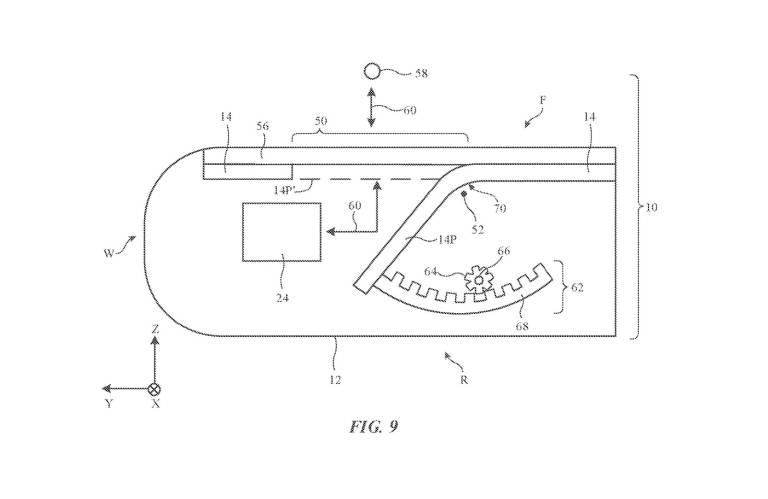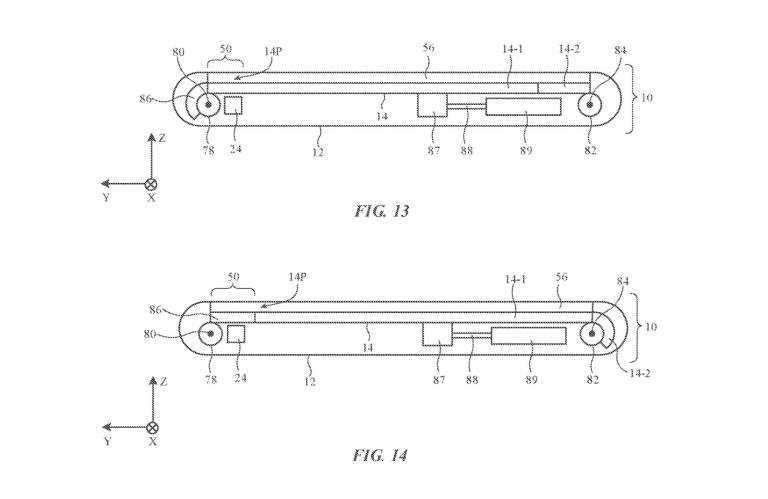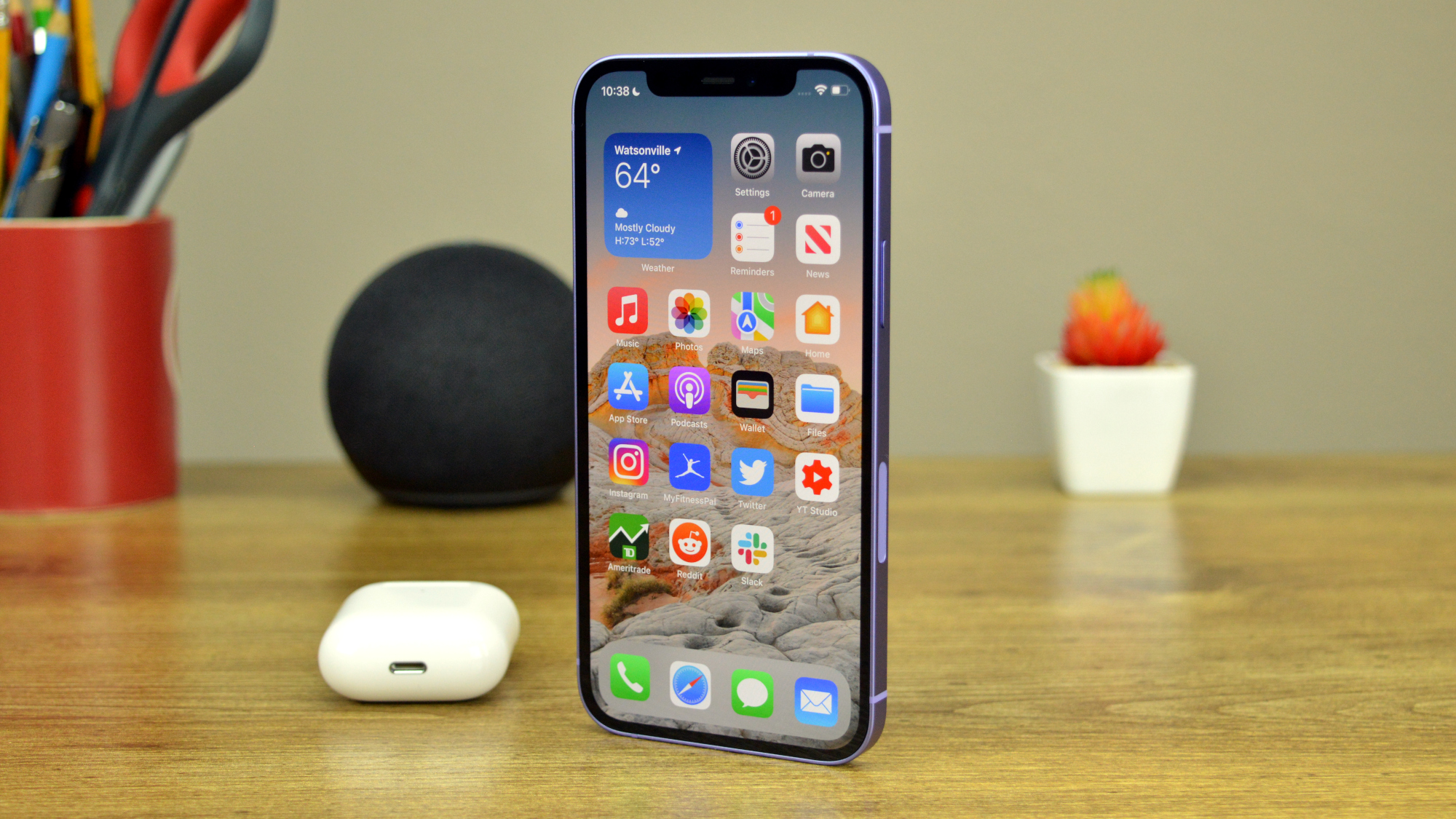Apple has a crazy idea for getting rid of the iPhone’s notch
Everyone in the mobile industry wants to perfect the smartphone design. Apple is trying to get rid of the iPhone’s notch, just as Android handset makers are attempting to eliminate the hole-punch camera. But no one is getting rid of the front-facing components that need to be on the handset. The cameras, sensors, and speakers have to stay where they are. They might go under the screen or inside of the bezel, depending on the phone. The Galaxy Z Fold 3, for instance, will have an under-display camera. ZTE also launched two devices with under-screen cameras, and other Chinese smartphone makers have been working on similar designs for years.
Over at Apple, the iPhone 13 will be the first iPhone with a smaller notch. But the company is working on all sorts of solutions to place the components in the notch under the display.
Placing the sensors under the display
In the past few weeks, we’ve seen a few Apple patents for technology that will allow sensors to read 2D and 3D information through a smartphone display. This will effectively allow the iPhone to read fingerprints or scan faces through the display. It’s this kind of tech that will make it possible for future iPhones to support both Face ID and Touch ID. And that’s how Apple will remove the iPhone notch.
USPTO patent number 11,073,712 was awarded to Apple on July 27th, 2021, after being filed on April 10th, 2018. This patent describes technology that allows Apple to read fingerprints through a display layer. The technology can be applied to iPhones, MacBooks, and other devices.
In December 2019, Apple filed documentation for a related invention. USPTO awarded patent number 11,067,884 to Apple on July 20th. Like 712, 884 describes technology that makes it possible to read 2D or 3D objects through the screen.
Both concepts would allow Apple to dump the iPhone’s notch for good. The challenge seems to be to ensure the sensors deliver the desired functionality without making the display look bad. This is where Apple’s brand-new innovation might help.
Apple filed for a patent titled Electronic devices with adjustable display windows in May 2020 (via Patently Apple). The USPTO awarded the patent to the company on August 3rd (patent number 11,079,797). Like 712 and 884, this patent gives Apple a method by which to place optical sensors under the display. But unlike 712 and 884, the innovation ensures that images captured through the screen are perfect and that the screen itself is perfect.
An iPhone display with moving parts
Light doesn’t have to pass through the OLED layer of pixels to reach the sensor in this case. Apple will just slide a part of the screen out of the way when the sensors are needed. The innovation seems to target Face ID components specifically, rather than Touch ID.
The patent offers two different ways of achieving this trick. One of them involves having a movable display window. When camera or sensor functionality is needed, the OLED window might open to let light pass through the sensor. Apple explains that the technology might use a periscope camera, which is exciting to note. This is how such a display would look like.

The second option is rolling the entire screen by a few millimeters to offer unobscured access to the camera. In either case, the iPhone notch components would effectively hide under the OLED panel.
When the screen would move to free up space for the front sensors, such as Face ID cameras, the contents on the screen could move accordingly, so the overall user experience isn’t disrupted. Apple even explains that, as the screen rolls to the right, the contents on it would roll to the left with the same speed.

Only the OLED layer would move in either case, not the rigid glass panel on top of it. That means the user would not touch any of the moving parts.
An apparent downside to moving the screen inside a phone concerns battery life. In either example above, the display would require extra components. And those components might consume internal space that’s otherwise used for increasing the battery capacity. Moreover, the battery would need to power the screen’s movements.
What if Apple isn’t thinking of the iPhone?
Considering the chronology of these three patents, ‘797 might seem like the kind of innovation that allows Apple to cover all its bases. If the previous ideas don’t work for reasons out of Apple’s control, it could still kill the iPhone notch with the help of a moving display.
But what if ‘797 isn’t just for iPhones? Or better said, what if this invention targets other Apple devices like laptops and even foldable devices?

When referring to the drawing above, Apple explains that “one or more displays such as display 14 may cover all of front face F, part of front face F, some or all of rear face R, and/or some or all of sidewalls W.” In other words, Apple is describing phones with wraparound screens. This could include foldable phones that feature multiple screens and screens that fold around corners.
Also, using a periscope camera is exciting as it might help Apple squeeze Face ID components into thinner devices. Again, foldable phones would qualify here. But, more importantly, the MacBook is the kind of device that might not be getting any Face ID love right now because the screen panel is too thin to fit the Face ID sensors.
Finally, the fact that Apple is looking at rollable displays is also a highlight of patent ‘797.
All of this is just speculation, of course. As always, with patented technology, there’s no guarantee that Apple will ever “kill” the iPhone notch by using displays with movable parts.
For all the latest Technology News Click Here
For the latest news and updates, follow us on Google News.




